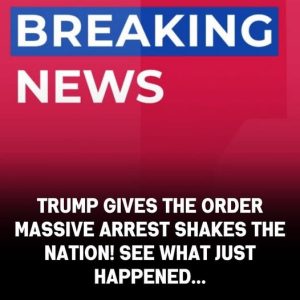Another day brings another headline surrounding former President Donald Trump — and, as usual, it has sparked debate across the political spectrum. Over the past several years, Trump has cultivated a reputation for bold announcements, ambitious promises, and headline-grabbing claims. Some have been realized, while many have faltered under scrutiny or logistical constraints. His second-term ambitions, particularly those articulated through social media channels like Truth Social, often combine economic proposals, political messaging, and personal brand building. In recent weeks, he has again captured attention by claiming that Americans would soon receive a $2,000 dividend funded by tariff revenue. Given his track record — from unfulfilled campaign promises to policy proclamations that struggled to survive legal or political challenges — many Americans greeted the announcement with skepticism. The plan’s allure is undeniable, offering what appears to be a direct financial benefit at a time when economic concerns remain a significant topic of public conversation. However, beneath the surface of this announcement lies a tangle of economic, legal, and political complexities that raise serious questions about its feasibility.
Trump’s proposed dividend emerged in the context of a broader narrative about his economic record and ongoing domestic and international policies. In recent years, he has repeatedly claimed that tariff policies imposed during his first administration and continued under emergency powers have generated massive revenue streams. On Truth Social, he stated, “A dividend of at least $2000 a person (not including high income people!) will be paid to everyone.” While this tweet generated immediate buzz and media coverage, it offered no specifics regarding eligibility, the timeline for distribution, or precise mechanisms for disbursing the funds. Moreover, Trump framed the dividend as a product of broader economic success, claiming that tariff revenues had positioned the United States as “the Richest, Most Respected Country In the World, With Almost No Inflation, and A Record Stock Market Price.” He also highlighted 401(k) growth and industrial investment as evidence that his policies had produced tangible wealth for American citizens. While such framing reinforces his political narrative of competence and economic acumen, experts and analysts immediately noted that the claims warrant closer scrutiny.
Economically, the $2,000 dividend faces major hurdles. Estimates suggest that distributing payments of this magnitude could cost between $300 billion and $513 billion, depending on eligibility criteria and whether minors would be included. If, for example, the distribution is limited to adults earning less than $100,000 annually, approximately 150 million individuals would qualify, resulting in a fiscal outlay near $300 billion. Even under the most optimistic scenarios, this figure far exceeds the net revenues that tariffs have actually generated to date. According to economist Erica York, “Adjusting for that, tariffs have raised $90 billion of net revenues compared to Trump’s proposed $300 billion rebate.” The gap between projected revenues and promised payouts raises significant questions about how the government would reconcile shortfalls. While Trump has historically suggested that policy mechanisms could create surplus revenues sufficient to fund ambitious programs, independent analyses indicate that such assumptions often overlook practical constraints, including administrative costs, market reactions, and fluctuations in trade balances.
Legal feasibility constitutes an additional, significant obstacle. Trump’s use of emergency powers to implement tariffs has already faced multiple legal challenges in courts nationwide. Three lower courts have ruled that these actions exceeded executive authority, and the Supreme Court is currently reviewing the matter. If these tariffs are ultimately deemed unlawful, the financial foundation for the $2,000 dividend would effectively disappear, leaving the proposal legally unenforceable. Moreover, even if the funds were available, the executive branch does not possess unilateral authority to distribute taxpayer dollars in the form of direct dividends without Congressional approval. Unlike social welfare programs such as unemployment benefits or tax rebates that are codified in law, this proposal lacks statutory authorization, meaning that any attempt to execute it would almost certainly trigger further judicial scrutiny. The legal ambiguity surrounding the plan highlights a broader challenge in modern governance: balancing executive ambition with constitutional checks and procedural rigor.
Historically, the notion of direct cash payouts to citizens is not unprecedented, though context and mechanisms have varied. During the 2008 financial crisis, for example, the federal government enacted stimulus checks as part of broader recovery efforts under the Economic Stimulus Act and the American Recovery and Reinvestment Act. Similarly, debates around universal basic income have periodically surfaced in the United States, though no federal program has been implemented at scale. In each instance, success depended not only on legislative authorization but also on careful fiscal planning and economic modeling to ensure that benefits could be delivered sustainably. Trump’s dividend proposal, by contrast, relies entirely on projected tariff revenue without a detailed implementation plan, raising concerns among economists and policymakers alike about both sustainability and economic impact. The debate reflects an enduring tension in American politics between populist appeals and the technical realities of policy execution.
Beyond technical feasibility, the announcement carries political and symbolic weight. By promising a direct payout to Americans, Trump taps into a powerful narrative of government directly serving the citizenry’s immediate financial needs. This message resonates with voters frustrated by inflation, stagnating wages, and economic uncertainty. Yet the lack of clarity in the proposal — from eligibility requirements to timing and source of funds — also underscores the speculative nature of the promise. Critics argue that the announcement functions more as political signaling than a concrete policy initiative, intended to reinforce Trump’s image as a decisive, citizen-focused leader. Supporters, however, may view it as a bold vision for economic empowerment, an example of using unconventional tools to provide tangible benefits to the populace. Either way, the announcement has succeeded in dominating media discourse, illustrating the enduring influence of Trump’s communications style on public debate.
Ultimately, while the prospect of receiving $2,000 in direct payments is undeniably appealing to many Americans, the practical, legal, and fiscal barriers to such a dividend render it largely aspirational. Without detailed legislation, secured funding, and judicial clearance, the plan remains, for the moment, more a headline than a reality. Experts caution that Americans should approach such promises with skepticism and avoid assuming that the payout will materialize absent concrete action from government institutions. As the Supreme Court and Congress continue to navigate the complex interplay between executive authority, fiscal responsibility, and legal compliance, the $2,000 dividend proposal serves as a case study in the challenges of translating ambitious political promises into feasible public policy. For now, the advice is clear: enjoy the idea of free money, but keep expectations grounded in legal and economic reality, and refrain from counting on funds until there is more than a social media post behind it.





